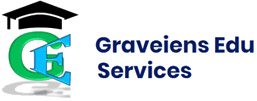As the business world rapidly shifts online, eLearning has become an essential component of modern corporate training programs. The need for efficient, effective, and rapid eLearning development is growing more important than ever, especially as the COVID-19 pandemic continues to drive remote work and virtual training.
In this blog, we’ll explore everything that brands should know about rapid eLearning development.

Rapid eLearning development is cost-effective and efficient
One of the most significant benefits of rapid eLearning development is that it’s both cost-effective and efficient. By using rapid authoring tools, designers can quickly create and update eLearning modules, cutting down on development time and costs. Additionally, because eLearning is scalable, it can reach a large audience at a relatively low cost, making it an excellent investment for companies looking to expand their training programs.
Rapid eLearning development requires a well-defined scope and clear goals.
To create effective eLearning quickly, designers need to have a clear understanding of the training goals and the scope of the project. This includes understanding the audience, their learning objectives, and any other factors that may impact the design process. Without a clear scope and goals, rapid eLearning development can quickly become overwhelming and ineffective.
Collaboration and communication are critical to successful rapid eLearning development.
Like any design process, collaboration and communication are essential to successful rapid eLearning development. Designers need to work closely with subject matter experts, trainers, and other stakeholders to ensure that the eLearning modules are accurate, engaging, and effective. This can involve regular check-ins, feedback sessions, and other forms of collaboration to keep the project on track and ensure that everyone is working towards the same goals.
Effective rapid eLearning development requires a deep understanding of instructional design principles.
Creating effective eLearning requires a deep understanding of instructional design principles, including how people learn, how to structure content, and how to create engaging and interactive experiences. Designers should have a strong understanding of instructional design principles to ensure that their eLearning modules are effective, engaging, and meet the needs of the audience.
Rapid eLearning development can be enhanced with multimedia elements.
Adding multimedia elements like videos, animations, and interactive graphics can help enhance the learning experience and increase engagement. Designers should consider incorporating multimedia elements into their eLearning modules to help reinforce key concepts and keep learners engaged.
Quality assurance is essential to ensure effective rapid eLearning development.
Like any design process, quality assurance is essential to ensure that the eLearning modules are effective, accurate, and engaging. This can involve testing the modules with a small group of learners before rolling them out to a larger audience, as well as regular updates and maintenance to ensure that the content remains accurate and up-to-date.
Conclusion
In conclusion, rapid eLearning development is an essential component of modern corporate training programs. By following these tips and best practices, brands can create effective and engaging eLearning modules quickly and efficiently, ensuring that their employees have the skills and knowledge they need to succeed in today’s fast-paced business world. If you are looking for an e-learning source provider, then graveiens are the best in business.



Comments 0